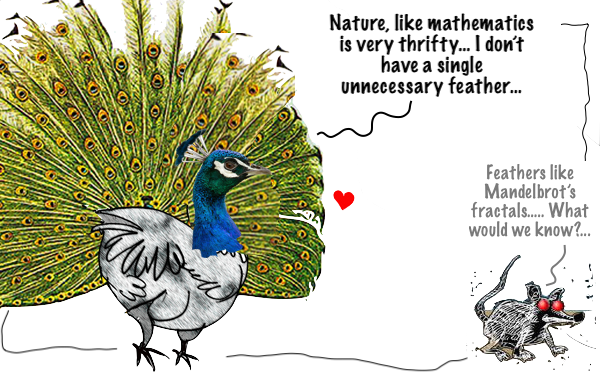Search
Democracy Links
Member's Off-site Blogs
the thrifty economy of energy in nature…..

There is a growing interest in evolutionary models of human adiposity. Frequent reference has been made to ‘thrifty genes’ or ‘thrifty phenotypes’, referring to a variety of metabolic or behavioural traits that in one or the other way imply frugality in the expenditure or storage of energy. However, there is confusion over how the strategy of thrift has been incorporated into human biology.
At the broadest level, humans represent a thrifty species relative to other mammals, indicating that metabolic adaptations had a crucial role in the emergence of the Homo lineage, in particular in buffering reproduction from ecological stochasticity. In contemporary humans, some variability in adiposity may be attributable to genotypes systematically favoured in certain ecological settings.
Genetic variability is also present within populations, and may be considered bet hedging (distributing risk across offspring to increase parental fitness). Bet hedging is an alternative to genetic drift for accounting for genetic variability in the absence of strong selective pressures. Contrasting with genetic variability emerging over the long-term, thrifty phenotypes represent a response to short-term ecological variability.
Physiological plasticity allows the emergence of variability across the life course in response to ecological cues experienced directly or by very recent ancestors. Finally, cultural norms or individual preferences allow voluntary behavioural manipulation of thrift in individuals. Overall, there is a range of factors and processes both favouring and opposing thrifty genes, which may reflect moderate bet hedging rather than systematic adaptation.
Plasticity protects the genome from selective pressures by tailoring the organism to ongoing ecological conditions. The fact that obesity can occur in different individuals through different genotypes, life histories and behaviours indicates that different treatments are also likely to be required.
Read more:
https://www.nature.com/articles/ijo2009175
In number theory, a frugal number is a natural number in a given number base that has more digits than the number of digits in its prime factorization in the given number base (including exponents).[1] For example, in base 10, 125 = 53, 128 = 27, 243 = 35, and 256 = 28 are frugal numbers (sequence A046759 in the OEIS). The first frugal number which is not a prime power is 1029 = 3 × 73. In base 2, thirty-two is a frugal number, since 32 = 25 is written in base 2 as 100000 = 10101.
The term economical number has been used about a frugal number, but also about a number which is either frugal or equidigital.
Read more:
https://en.wikipedia.org/wiki/Frugal_number
See also:
https://www.youtube.com/watch?v=4PlmsnyWXMw
https://en.wikipedia.org/wiki/Mandelbrot_set
FREE JULIAN ASSANGE NOW !!!!!!!!!!!!!!!!!
- By Gus Leonisky at 28 Mar 2022 - 3:26pm
- Gus Leonisky's blog
- Login or register to post comments
Recent comments
3 hours 57 min ago
12 hours 37 min ago
13 hours 15 min ago
14 hours 54 min ago
15 hours 3 min ago
15 hours 8 min ago
18 hours 53 min ago
1 day 5 min ago
1 day 31 min ago
1 day 1 hour ago